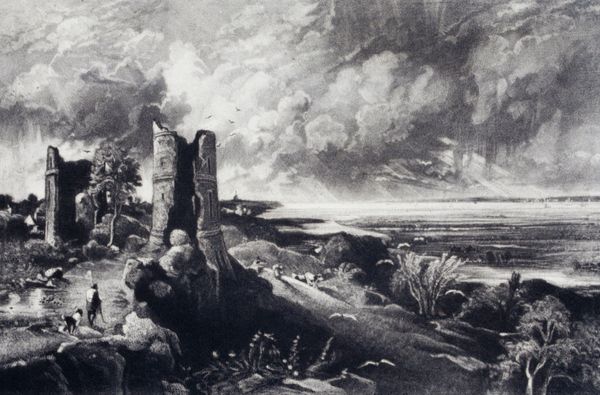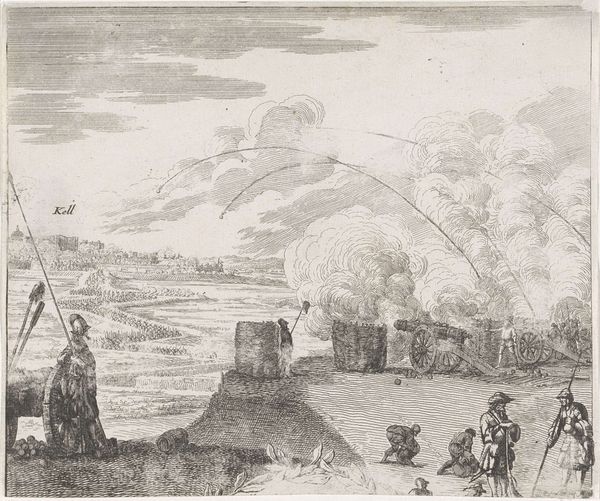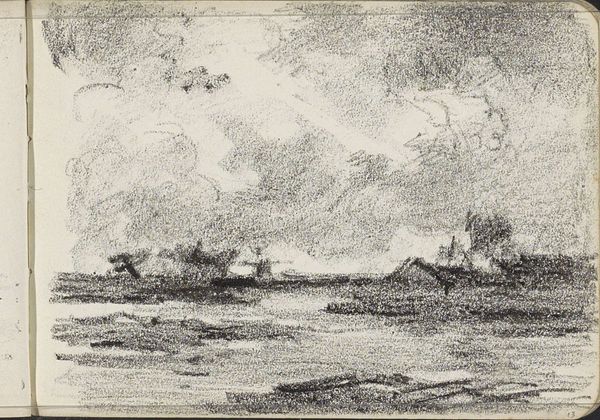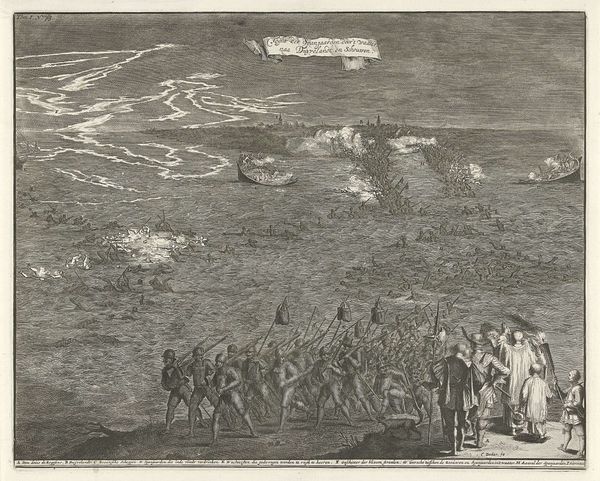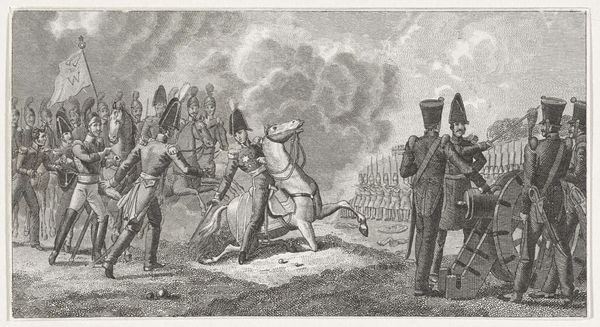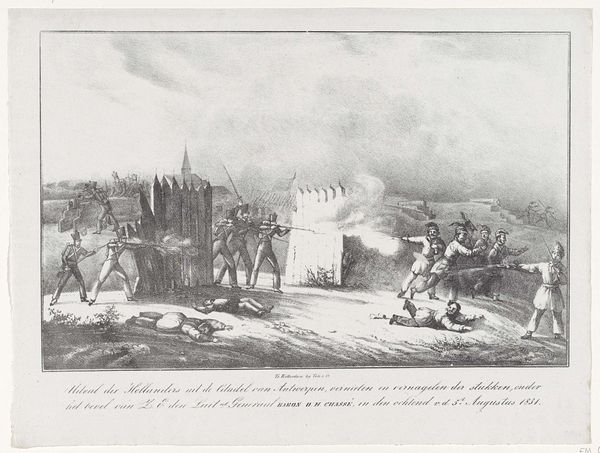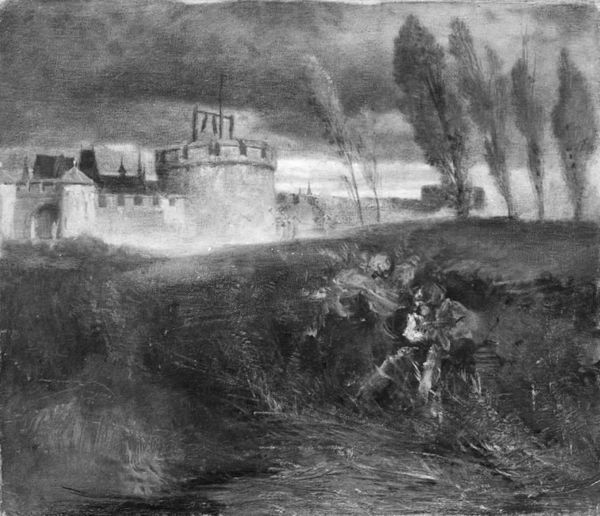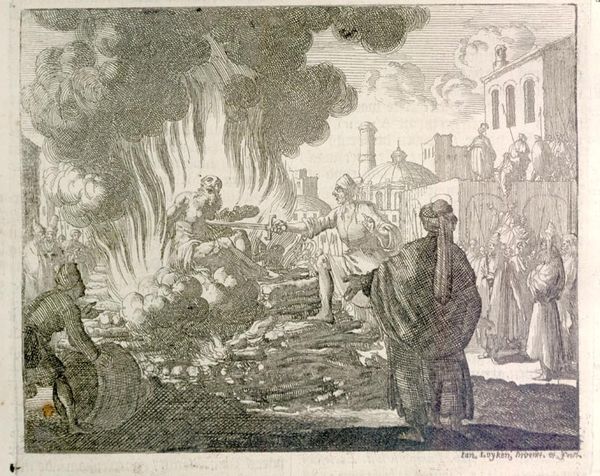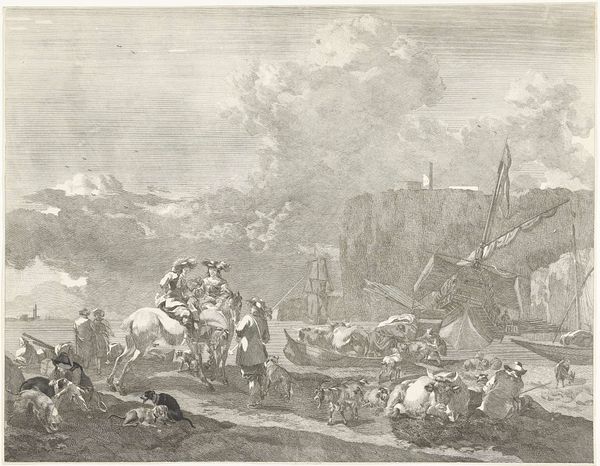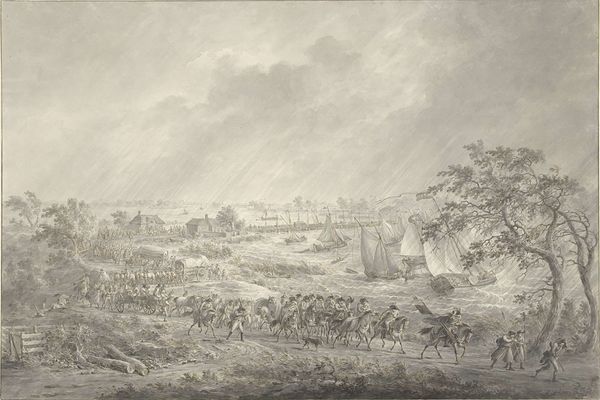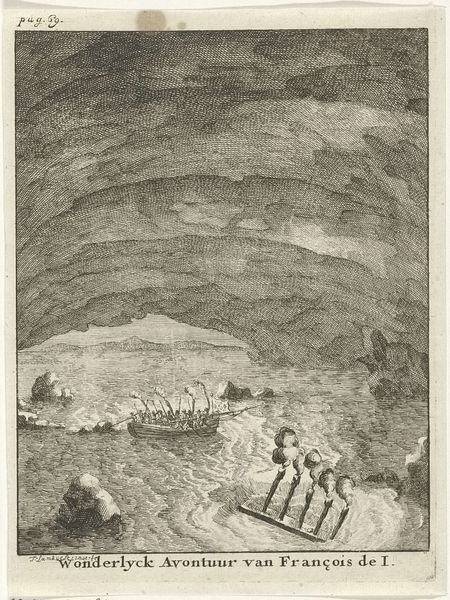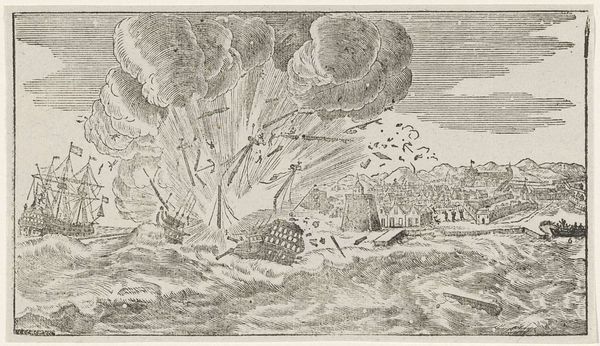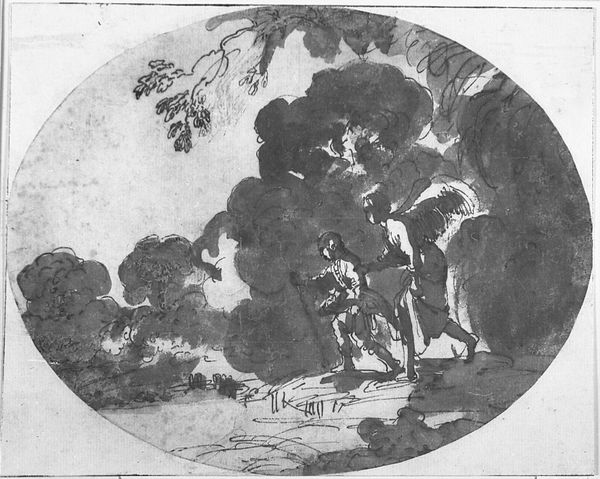
drawing, charcoal, architecture
#
drawing
#
landscape
#
charcoal drawing
#
orientalism
#
russian-avant-garde
#
charcoal
#
architecture
Copyright: Public domain
Curator: Let's consider Nicholas Roerich's 1914 charcoal drawing, "Polovtsian Camp". The scene depicts a nomadic encampment under a heavy sky. What is your initial read on it? Editor: Stark. It is monochromatic and evokes a feeling of isolation and the harsh realities of nomadic life. The swirling charcoal sky above the yurts certainly sets an imposing mood. Curator: Indeed. Roerich, as a member of the Russian avant-garde deeply invested in both orientalism and folklore, used his art to engage with cultural roots, and in this case to build an idealized, romantic image. The image engages ideas of otherness and the past. Editor: I can see how those formal contrasts really play into that. The solid, geometric yurts set against the vaporous, almost threatening sky—a juxtaposition that emphasizes the vulnerability of this community while, paradoxically, highlighting their groundedness, and their capacity for endurance. The composition also frames the structures quite nicely, while allowing a lot of texture in the landscape, really providing the sense of setting. Curator: That ties into Roerich's wider fascination with Eastern cultures and their spiritual connection to nature. Roerich helped design the sets for the ballet of Igor Stravinsky "Le Sacre du printemps". As an orientalist this image, through his lens, reflects broader Russian cultural and political engagements in Central Asia at the time. Editor: So the seemingly simple formal language conceals a really fascinating matrix of cultural appropriation, romanticism, and symbolic geography? Curator: Exactly. And it asks us to examine how images can reflect a longing for a more authentic, simpler existence, and it challenges perceptions, by using cultural imagery, about cultural connections and tensions. Editor: Fascinating. For me, I see now not just the simple artistry in the charcoal strokes but this interplay between visual structure and historical meaning. It invites you to ponder about the piece far beyond what you observe directly. Curator: Yes, the drawing makes us rethink the visual tools used to tell a broad range of historical and social narratives.
Comments
No comments
Be the first to comment and join the conversation on the ultimate creative platform.

